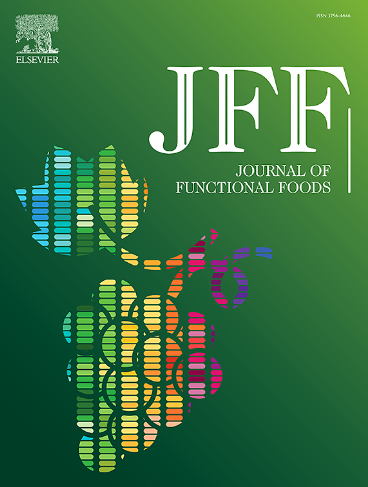嗜热链球菌发酵乳CGMCC 24468对HaCaT细胞ROS损伤的细胞保护作用
IF 3.8
2区 农林科学
Q2 FOOD SCIENCE & TECHNOLOGY
引用次数: 0
摘要
嗜热链球菌传统上被用作乳制品发酵产品生产中的发酵剂。最近,这个物种强调了它对皮肤健康的潜在益处。本研究评估了嗜热链球菌CGMCC 24468对角质形成细胞HaCaT的保护作用。与超声发酵乳裂解液(SFML)上清共孵育,增强了紧密连接蛋白(CLDN-1、OCLN和JAM-1)的表达和抗氧化酶基因(CAT、SOD和GPX)的转录,降低了细胞内ROS水平。SFML预处理抑制MAPK通路的激活,加速伤口愈合。总之,这些结果证明了嗜热链球菌CGMCC 24468发酵乳作为一种天然成分在化妆品配方中预防ros诱导的皮肤光老化的潜在应用。本文章由计算机程序翻译,如有差异,请以英文原文为准。

Cytoprotective effects of the fermented milk by Streptococcus thermophilus CGMCC 24468 against ROS damage in HaCaT cells
Streptococcus thermophilus is traditionally used as a starter culture in the production of dairy fermented products. Recently this species has highlighted its potential benefits for skin health. This study evaluated the protective effects of S. thermophilus CGMCC 24468 on keratinocytes HaCaT. Co-incubation with the supernatant of sonicated fermented milk lysate (SFML) enhanced the expression of tight junction proteins (CLDN-1, OCLN, and JAM-1) and the transcription of antioxidative enzyme genes (CAT, SOD, and GPX), reducing intracellular ROS levels. Pre-treatment with SFML inhibited the activation of the MAPK pathway and accelerated wound closure. Collectively, these results demonstrated the potential application of S. thermophilus CGMCC 24468 fermented milk as a natural ingredient in cosmetic formulations for preventing ROS-induced skin photoaging.
求助全文
通过发布文献求助,成功后即可免费获取论文全文。
去求助
来源期刊

Journal of Functional Foods
FOOD SCIENCE & TECHNOLOGY-
CiteScore
9.60
自引率
1.80%
发文量
428
审稿时长
76 days
期刊介绍:
Journal of Functional Foods continues with the same aims and scope, editorial team, submission system and rigorous peer review. We give authors the possibility to publish their top-quality papers in a well-established leading journal in the food and nutrition fields. The Journal will keep its rigorous criteria to screen high impact research addressing relevant scientific topics and performed by sound methodologies.
The Journal of Functional Foods aims to bring together the results of fundamental and applied research into healthy foods and biologically active food ingredients.
The Journal is centered in the specific area at the boundaries among food technology, nutrition and health welcoming papers having a good interdisciplinary approach. The Journal will cover the fields of plant bioactives; dietary fibre, probiotics; functional lipids; bioactive peptides; vitamins, minerals and botanicals and other dietary supplements. Nutritional and technological aspects related to the development of functional foods and beverages are of core interest to the journal. Experimental works dealing with food digestion, bioavailability of food bioactives and on the mechanisms by which foods and their components are able to modulate physiological parameters connected with disease prevention are of particular interest as well as those dealing with personalized nutrition and nutritional needs in pathological subjects.
 求助内容:
求助内容: 应助结果提醒方式:
应助结果提醒方式:


